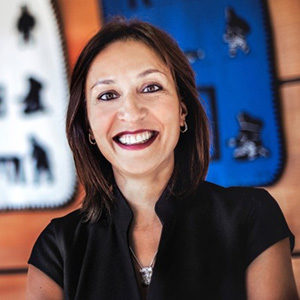The series of 11 videos includes two that offer general information about cancer risks and prevention from a recognized physician in the community. The remaining nine are split into packages that focus on breast, colorectal and cervical cancer.
The work is based on findings from an earlier Cancer ACCESS Project, led by Sangita Sharma, head of the U of A’s Indigenous and Global Health Research Group (IGHRG), and funded by Alberta Innovates – Health Solutions.
The project revealed misunderstandings that were preventing people from accessing screening services in the area.
The suggestion from the participating communities – concerned about screening rates for breast, cervical and colorectal cancers – was that the best way to reach people would be using the voices of local community members.

The videos are based on research led by Sangita Sharma, head of the U of A’s Indigenous and Global Health Research Group, that revealed misunderstandings preventing people from using screening services in northern communities. (Photo: Faculty of Medicine & Dentistry)
Together, Sharma, her team and the community decided to create a video series featuring local community members, elders and health-care staff.
Each package contains an informal, scripted conversation with community members, an informative video about the specific cancer from a health professional and an instructional video that explains the screening process.
Every video script was reviewed by a community advisory board, more than 400 community members and elders, the Department of Health and Social Services of the government of the Northwest Territories, and the Hotıì ts’eeda Northwest Territories Strategy for Patient-Oriented Research Support Unit.
“This is one thing that we are really proud of,” said Sharma. “We were able to have community members featured in the videos – elders and others who are known to be advocating for a reduction in cancer. We had André Corriveau, the previous chief public health officer; he’s been in the North for 30 years. Leah Seaman is recognized by everybody; she lived in one of the communities for many, many years.
“It’s really nice as a researcher at a university to have community members coming forward, wanting to be featured and fully supporting us.”
Along with Carolyn Gotay, a University of British Columbia professor emeritus with northern experience, with U of A researcher Fariba Kolahdooz as project lead, the IGHRG worked with Artless Collective, a film crew from Yellowknife, to create the videos.
One of the suggested methods for circulating the series to the appropriate audiences is to have it playing in health centres within the Northwest Territories. The videos are available in English and French, and Sharma has submitted a grant seeking funding to have them translated into the nine other official languages in the Northwest Territories.
“Then it can be distributed to all of the communities in a culturally appropriate language,” said Sharma.
“Everybody provided input to make sure it was very northern in context and content, ensuring the materials are culturally appropriate.”
The project was funded by the Canadian Cancer Society Research Institute, the Canadian Institutes of Health Research and the Northwest Territories Department of Health and Social Services.
| By Adrianna MacPherson
This article was submitted by the University of Alberta’s online publication Folio, a Troy Media content provider partner.
The views, opinions and positions expressed by columnists and contributors are the author’s alone. They do not inherently or expressly reflect the views, opinions and/or positions of our publication.

